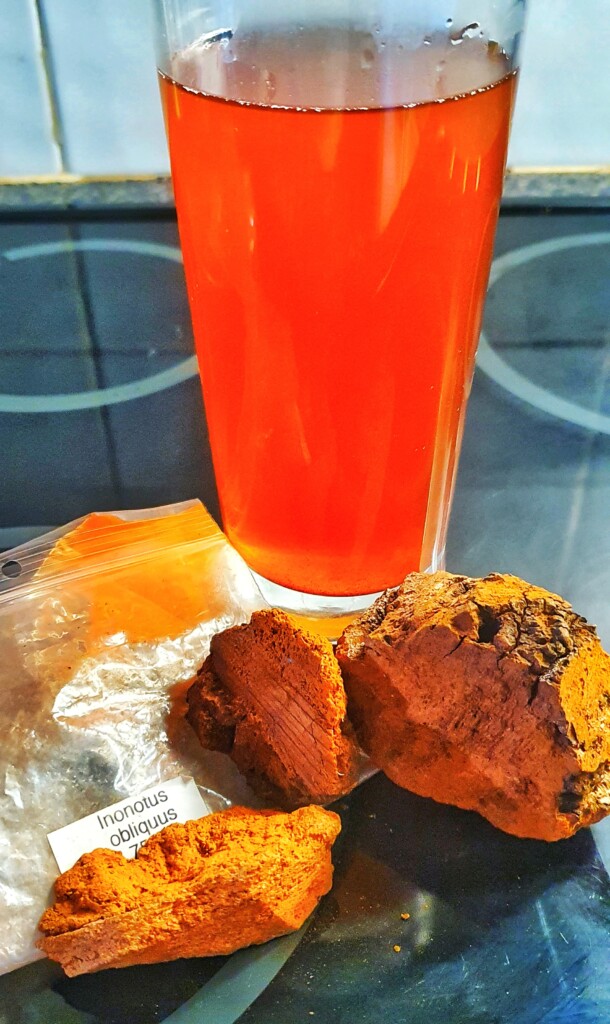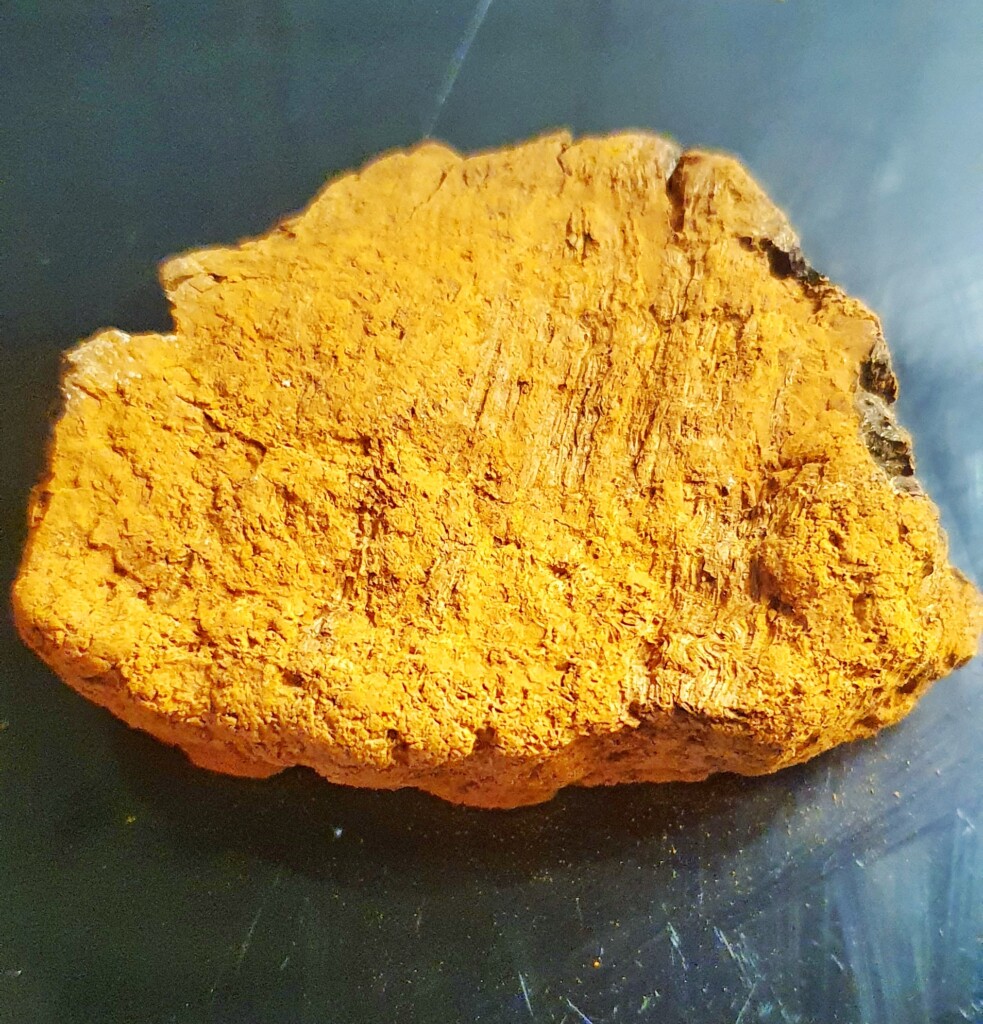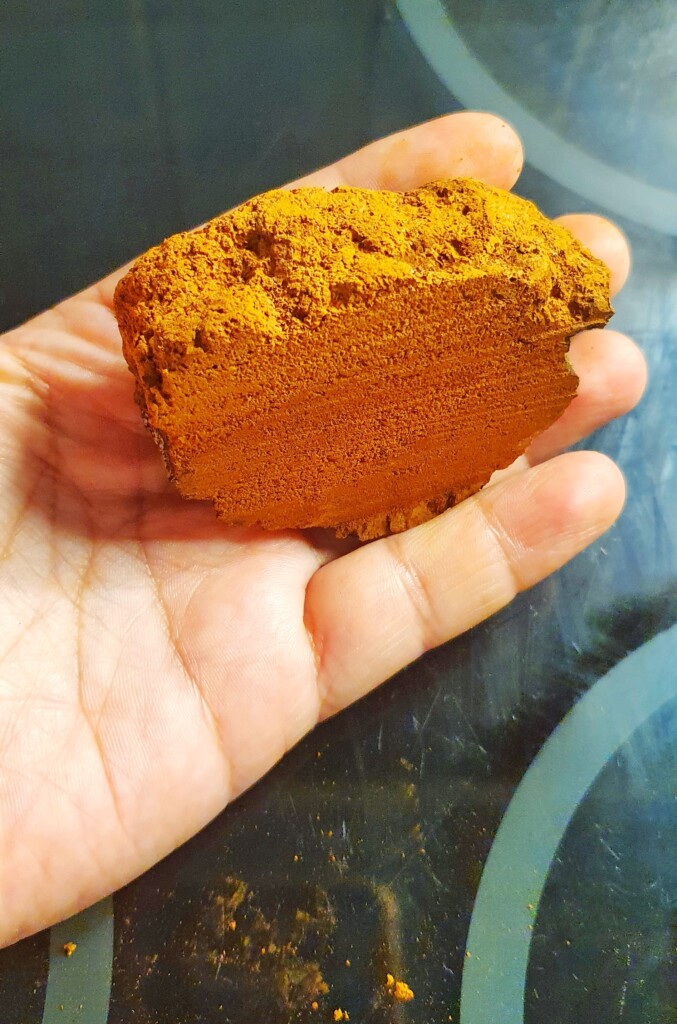Inonotus obliquus: Top 12 Benefits of Chaga Mushroom
I discovered this powerful Medicine during my trip to Toronto couple of years ago, still nowadays I consumed this Chaga mushrooms, they have been used for centuries in Siberia and other parts of Asia as a medicine to boost immunity and improve the overall health
Chaga is rich in fiber and essential nutrients, including vitamin D, iron, magnesium, potassium, manganese, and calcium. Chaga’s high melanin content has led some to believe that it can bolster the melanin naturally found in the skin, thereby protecting it from sun damage, skin cancer, wrinkles, or aging.

Though ugly in appearance, the Chaga mushroom is gaining popularity in the Western world for its potential health benefits.
What’s more, a cup of tea made from chaga is packed with antioxidants
This article examines the uses, benefits
Mushrooms have throughout history been used in the treatment of disease. They are rich in vitamins, minerals, carbohydrates, proteins, fiber and secondary metabolites. Furthermore, they contain a variety of bio-active molecules such as polysaccharides, phenols, terpenoids, steroids, derivatives of glycoprotein; these, each in their own way, may positively contribute to a variety of health conditions. The Chaga mushroom, now described as Inonotus obliquus belongs to the Hymenochaetaceae family and there is evidence supporting it being medicinally beneficial in cancer, viral infections and glucose disorders, such as diabetes. It may stimulate the immune system and have anti-inflammatory properties; this will be discussed below
Chaga mushroom (Inonotus obliquus) is a type of fungus that grows mainly on the bark of birch trees in cold climates, such as Northern Europe, Siberia, Russia, Korea, Northern Canada and Alaska.
Chaga is also known by other names, such as black mass, clinker polypore, birch canker polypore, cinder conk and the sterile conk trunk rot (of birch).
Chaga produces a woody growth, or conk, which looks similar to a clump of burnt charcoal — roughly 10–15 inches (25–38 centimeters) in size. However, the inside reveals a soft core with an orange color.
For centuries, chaga has been used as a traditional medicine in Russia and other Northern European countries, mainly to boost immunity and overall health.

It has also been used to treat diabetes, certain cancers and heart disease (1).
Traditionally, chaga was grated into a fine powder and brewed as an herbal tea.
Nowadays, it’s not only available as a tea but also as a powdered or capsuled supplement.
Summary Chaga mushroom is a fungus that grows primarily on birch trees in cold climates. With an appearance similar to burnt charcoal, it has been harvested for centuries as a traditional medicine.
Boosts Your Immune System and Fights Inflammation
Inflammation is a natural response of your immune system that can protect against disease. However, long-term inflammation is linked to conditions like heart disease and rheumatoid arthritis (Trusted Source).
Animal and test-tube studies suggest that chaga extract can positively impact immunity by reducing long-term inflammation and fighting harmful bacteria and viruses.
By promoting the formation of beneficial cytokines — specialized proteins that regulate the immune system — chaga stimulates white blood cells, which are essential for fighting off harmful bacteria or viruses (Trusted Source,
As a result, this mushroom could help fight infections — from minor colds to serious illnesses.
Additionally, other animal and test-tube studies demonstrate that chaga can prevent the production of harmful cytokines, which trigger inflammation and are associated with disease (Trusted Source, 7).
For example, in a study in mice, chaga extract reduced inflammation and gut damage by inhibiting inflammatory cytokines (Trusted Source).
Inonotus obliquus has been shown to have a variety of positive effects on the immune system. One study, observing cancer in mice fed with polysaccharide extracts of Inonotus obliquus (30mg/kg/day), noticed the extract did not kill cancer cells but did enhance the mouse survival rate (by four times). This effect was due to the stimulation of the immune system [7.].
In another, immuno-suppressed mice received 24 days of aqueous Inonotus obliquus extract, and researchers saw an improvement in the immune response of the mice. These mice had had their immune system suppressed with bone marrow damage, the Inonotus obliquus extract saw a return of some immune cells, to near normal levels [8.]. Furthermore, they saw stimulation of specific immune cell colonies, in addition to an increase in important cytokine molecules – cytokines are essential in regulating immune responses.
Finally, in vitro, lignin complexes extracted from Inonotus obliquus were able to increase the phagocytic activity of macrophages. Macrophages are immune cells that engulf and remove unwanted pathogens and debris in the body and are essential to the immune system response [9.].
Anti-Viral
A study showed that water extracts of Inonotus obliquus were able to reduce the infection ability of the hepatitis C virus in vitro [15.]. Furthermore, lignin complexes extracted from Inonotus obliquus were able to suppress the HIV-1 protease [16.]These are valuable findings as this protease is essential for the life cycle of the HIV virus.

Prevents and Fights Cancer
Several animal and test-tube studies show that chaga can prevent and slow cancer growth (Trusted Source).
In a study in mice with cancer, chaga supplements resulted in a 60% reduction in tumor size (Trusted Source).
In a test-tube study, chaga extract prevented the growth of cancer in human liver cells. Similar results were observed with cancer cells of the lung, breast, prostate and colon (Trusted Source, 12, 13Trusted Source, Trusted Source).
It’s thought that the anticancer effect of chaga is partly due to its high content of antioxidants, which protect cells from damage by free radicals (Trusted Source).
In particular, chaga contains the antioxidant triterpene. Test-tube studies reveal that very concentrated triterpene extract can help kill cancer cells (Trusted Source).
Keep in mind that human studies are needed in order to make strong conclusions about chaga’s anticancer potential.
Liver cancer
Inonotus obliquus extract administered in a liver cancer model using, human hepatoma cells in vitro, induced cell death 1.] – essential to prevent proliferation and growth of tumors.
Skin cancer
Using a mouse model with melanoma cells, associated with skin cancer, a dose of 20mg/kg/day of aqueous extracts of Inonotus obliquus, reduced tumour growth and prevented proliferation [4.]. The mechanisms behind these effects appear to include the increase in important proteins involved in apoptosis that lead to controlled cell death following the administration of Inonotus obliquus.
Colorectal
Aqueous extracts of Inonotus obliquus have shown their ability to inhibit the proliferation of colorectal cancer in vitro and colon tumours in mice [5.]
Lung cancer
An in vitro study of non-small cell lung cancer saw the extracted polysaccharides from Inonotus obliquus inhibit metastatic growth (spread) of the tumour, indicating a role in the prevention of secondary tumour formation [6.]
The evidence here supports a positive role for the administration in vitro and in vivo animal models of Inonotus obliquus in inhibiting the growth of cancer cells and potential spread to secondary tumours. The molecular mechanisms appear to be due to cell-death pathways, leading to inhibition of cancer cell proliferation.
Lowers Blood Sugar
Rats that have induced diabetes were fed extracts of Inonotus obliquus specifically, the polysaccharides from the mushroom. These rats received doses of 10mg, 20mg or 30mg for a period of 6 weeks. It was shown that blood glucose levels were reduced in a dose-dependent manner; furthermore, the pancreatic beta-cells damaged by inducing diabetes, saw some restoration [2.]. Another chemically induced diabetic mouse model, fed dry matter extracts taken from Inonotus obliquus culture broth, led to an improvement in serum insulin levels and reduced pancreatic cellular damage [3.]. Collectively, this suggests a role for Inonotus obliquus in moderating blood glucose levels and restoring the effects on the pancreas due to damage from inducing diabetes.
Several animal studies link chaga to lower blood sugar levels. Therefore, it may help manage diabetes (16Trusted Source, 17Trusted Source).
A recent study in obese, diabetic mice observed that chaga extract reduced blood sugar levels and insulin resistance compared to diabetic mice who did not receive the supplement (Trusted Source).
In another study in diabetic mice, chaga supplements led to a 31% decrease in blood sugar levels over three weeks (17Trusted Source).
Similar results have been seen in other studies (19, 20Trusted Source).
However, as human research is unavailable, it’s unclear whether chaga can help manage diabetes in humans.
Lowers Cholesterol
Chaga extract may also benefit cholesterol levels, reducing your risk of heart disease.
In an eight-week study in rats with high cholesterol, chaga extract reduced “bad” LDL cholesterol, total cholesterol and triglycerides while increasing antioxidant levels (21).
Similar studies gave the same results and observed that — in addition to reducing “bad” LDL cholesterol — chaga increases “good” HDL cholesterol (17Trusted Source, 18Trusted Source).
Researchers believe that the antioxidants present in chaga are responsible for its effects on cholesterol.
Summary Animal and test-tube studies found that chaga extract may boost immunity, prevent chronic inflammation, fight cancer, lower blood sugar levels and reduce cholesterol. However, more human studies are needed.
Anti-inflammatory and anti-oxidant
The body produces reactive oxygen species (ROS) that are essential in certain pathways however, when uncontrolled they can cause damage to DNA, contribute to pathologies such as diabetes, cancer and cardiovascular disease. Therefore, it is important to have a balance between the production of ROS and removal/scavenging of them. Inonotus obliquus has been shown to moderate the effects of ROS in human fibroblasts [10.]. Freeze dried extracts of Inonotus obliquus have been shown to have a more effective scavenging activity of superoxide radicals even compared to ascorbic acid (Vitamin C); this effect was dose dependent [11.]. Moreover, administration of Inonotus obliquus (100mg/kg) was able to modulate inflammatory responses and cytokine production enabling an appropriate Th1 and Th2 cell response [12.]; essential for a healthy immune response. It is important to note that oxidative stress due to reactive oxygen species, can contribute to aging, cardiovascular disease and stroke. Natural sources rich in anti-oxidants are being heavily researched in an effort to prevent disease and protect the body; the effects observed from Inonotus obliquus are very promising.
REFERENCES
Duru, K.C., et al., The pharmacological potential and possible molecular mechanisms of action of Inonotus obliquus from preclinical studies. Phytother Res, 2019. 33(8): p. 1966-1980.Diao, B.Z., W.R. Jin, and X.J. Yu, Protective Effect of Polysaccharides from Inonotus obliquus on Streptozotocin-Induced Diabetic Symptoms and Their Potential Mechanisms in Rats. Evid Based Complement Alternat Med, 2014. 2014: p. 841496.Wang, J., et al., Antidiabetic activities of polysaccharides separated from Inonotus obliquus via the modulation of oxidative stress in mice with streptozotocin-induced diabetes. PLoS One, 2017. 12(6): p. e0180476.Youn, M.J., et al., Potential anticancer properties of the water extract of Inonotus [corrected] obliquus by induction of apoptosis in melanoma B16-F10 cells. J Ethnopharmacol, 2009. 121(2): p. 221-8.Mishra, S.K., et al., Inonotus Obliquus Suppresses Proliferation of Colorectal Cancer Cells and Tumor Growth in Mice Models by Downregulation of β-Catenin/NF-κB-Signaling Pathways. European Journal of Inflammation, 2013. 11(3): p. 615-629.Lee, K.R., et al., Inonotus obliquus-derived polysaccharide inhibits the migration and invasion of human non-small cell lung carcinoma cells via suppression of MMP-2 and MMP-9. Int J Oncol, 2014. 45(6): p. 2533-40.






1 Comment
Maytenus Laevis Benefits - Discover Your Heart
At my experiences traveling through the Amazon, I have discovered so many plants & uses, some of them I have included at my diet, today I would like to share the Maytenus Laevis. Native to the Amazon Rainforest and other parts of South America, Chuchuhuasi translates as “trembling back” due to its effectiveness as a remedy for back pain, immune boots, arthritis, and rheumatism, etc. It has been used by the indigenous peoples and local healers, known as “curanderos“, for its healing properties as a pain reliever, digestive aid, a general tonic for overall well being. For other posts related to herbal Medicine please click Here;-). […]
Comments are closed.